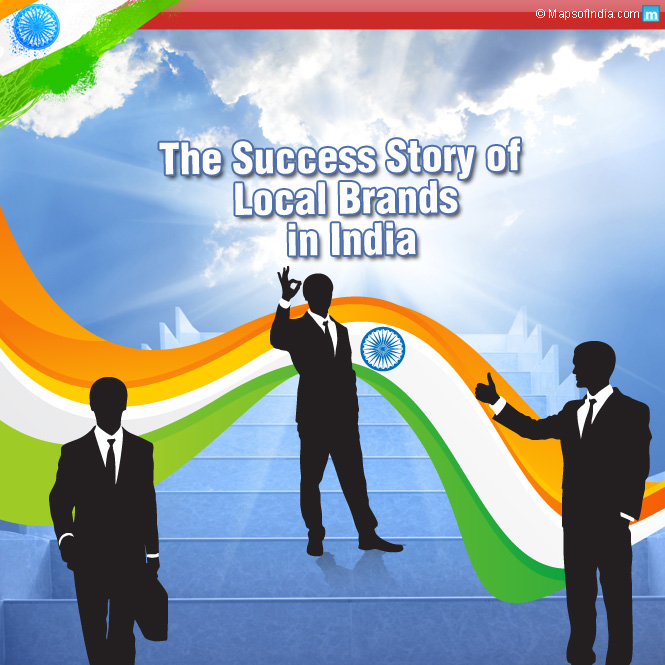Recently, there was a news report that local Indian consumer electronics company Micromax has dislodged South Korean conglomerate Samsung Electronics to grab the top slot in the quarter ended June 2014. Though Samsung chose to rubbish the reports, it leaves us to wonder the pace at which the local brands are growing and how they are overcoming the competition posed by the rival multinational companies.
Let us take the case of Micromax. Micromax, its official website says, is one of the leading consumer electronics companies in India and the tenth largest mobile phone player in the world. It is currently the second largest smartphone company in India.
Micromax began as an IT software company in the year 2000. It later entered the mobile segment and by 2010 went on to become the largest domestic mobile handsets company. The company stood apart from the competition – a) in terms of its contemporary designs and b) in offering the same specifications as the foreign rivals but at a much lower cost.
As per International Data Corp., in 2013 Micromax had 22 percent share of the mobile handset market in India, a close second to Samsung which was at 26 percent. In 2014, if a Counterpoint Research study is to be believed, Micromax is now the leading mobile handset provider.
What did Micromax do right?
Micromax understood the sentiments of the common people. It developed phones with features and functions that matched rival brands but came at very low costs. In this manner, it managed to attract many first-time buyers. The first time buyers wanted to upgrade their phones and Micromax came as an apt option – an option that allowed them to enjoy all the features that the rivals offered, yet it did not cost them a bomb. It also targeted the semi-urban and rural areas, where the consumers were ready to own high end mobile phones, if they came with lot of features and at lower costs.
Micromax has also been advertising heavily. They maintained continued presence on the television, the print and outdoor areas. They created their advertisements, especially the TV commercials to match up to global standards. It is also believed that word of mouth publicity worked very well for it, where people vouched for the product and prompted others to buy too.
More such stories
When it comes to Indian brands, there are small regional brands that are giving tough competition to national brands and also to their multi-national counterparts. These small and medium companies have been working very hard to make the transition from being regional to national.
There are many stories. Let us explore a few of them:
Shaving cream Vi-John
Vi-John, a shaving cream, may not ring a bell instantly as the foreign brand Gillette does, but it sells twice more than Gillette. It is endorsed by Sharukh Khan and is a hot favourite in small towns and cities. Vi-John is an INR 500 crore company and has interests in real estate and liquor as well, apart from Fast Moving Consumer Goods (FMCG). Its steady success in the male grooming market has encouraged it to take on the rival foreign brands.
Waghbakri tea
Waghbakri tea is a market leader in Gujarat. This brand is now trying to go national and has extended its presence in Karnataka, Rajasthan, Andhra Pradesh, Goa, Delhi, Hyderabad, Madhya Pradesh and Maharashtra. It is all set to take on its MNC rival – Hindustan Unilever (HUL). Waghbakri operates on a simple formula – understand the local palate and offer exactly what they want. They test about 500 samples a day in order to get the right brew and blend for a particular region. Like for instance in south Gujarat people tend to use creamy milk, so Waghbakri has a brew that will blend with the richness of the milk, and yet sport a delicious flavour.
Mapro Foods
Founded in 1959, Mapro Foods began as a small jam unit in Panchgani. Initially, they made batches of 10 kg jam each in a small room over a kerosene stove. The jam received overwhelming response and they had to move to higher facility soon. Apart from jams, they ventured into fruit squashes and crushes. The advantage they had was the higher content of fruit juice as compared to the rivals…after all, 70 percent of the strawberry production happens in Panchgani. Success led them to open up plants in Maharashtra and Punjab. In 2005, as jam and squash business began slowing down, they ventured into confectionery and chocolates. In 2008, they launched their pulpy fruit chews by the name Falero. Mapro Foods says that no company can match them when it comes to chews as they have chews in all the flavours – alfonso, strawberry, etc. They have about 400 distributors as of now and are planning to expand to 700. The 5000 crore chocolate division is doubling every three years, making rivals like Perfetti feel the heat.
Havmor ice cream
Havmor was established in Ahmedabad in 1955 and has 100 Hav Funn ice cream parlours that sells over one lakh litres of ice cream every day. Havmor commands over 35 percent of the ice cream’s market share in Gujarat. The ice cream market is pegged at INR 600 crore. Ankit Chona, Managing Director of Havmor, in a newspaper article, said that out of the total ice cream consumption in the country, Gujarat consumes about 20 percent, with Ahmedabad ranking the highest consumer city. They were able to cater to this audience through their innovative milk-based ice cream, he said. Today, Havmor has expanded and has presence in Maharashtra, Rajasthan, Madhya Pradesh and Goa. They attribute this success to their quality and their distribution network. Multinational companies are eying Havmor from an acquisition perspective.
Conclusion
What works well for these regional and local brands are that they understand the local tastes and are ready to adapt to the changing needs of the people. They are ready to react faster and better to the behavioural changes in the people. There are many such local brands in India that are all set to grow and script their success story in their own unique way. We simply have to wait and watch out for them.






